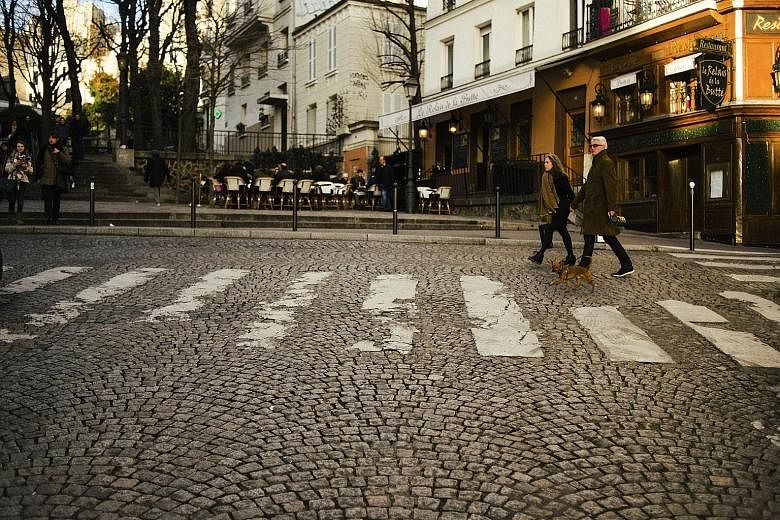NEW YORK • The cobblestones of Paris have seen some things.
They were trodden by jaunty French soldiers in 1914 and jubilant Free French liberators in 1944, and were rolled over by the tumbrels of 1793 and the panzers of 1940. They were hurled at the police and piled in barricades in 1848 and 1968. They have been shown rain-slicked in countless paintings and photographs.
And now you can own one. Used Paris cobblestones are being offered for sale online at Mon Pave Parisien - monpaveparisien.fr - spruced up and suitable for showcasing on a mantleanywhere in the world.
Each year, the city digs up about 10,000 tons of old cobblestones as it rebuilds or repaves its streets. It used to discard them along with other rubble.
But officials recently hit on the idea of salvaging the stones and selling them, to spare the city the trouble and expense of hauling them to the dump.
"Rather than have cobblestones thrown away, we collect them, clean them and give them a second life," said Mr Patrick Marchetti, head of the city maintenance yard where the stones are stored.
The intended buyers were contractors and others who wanted to build with them.
But entrepreneur Margaux Sainte- Lague saw an opportunity. Last September, she bought five tons of the cobblestones for about €200 (S$305) and set about turning them into keepsakes for local and foreign buyers eager for a bit of Paris laden with memories.
She polishes the stones, which weigh from 1.1kg to 2.7kg, and handpaints them in various designs - from the simple tricolour of the French flag to a gold-plated version. And in true collectible fashion, she gives each stone a number and a "Made in Paris" certificate.
All that transforms an eight-cent paver into a souvenir priced at €60 to €150. So far, she has sold more than 100 and shipped them to buyers as far away as Oklahoma and China.
The streets of Paris were first paved with stones in the 12th century under King Philip II and the practice continued well into the 20th century.
These days, cobblestones are buried under the asphalt on about one- third of the city's streets, but they endure as the surface pavement on a few iconic boulevards and squares, such as the Champs-Elysees and in the narrow alleys of historic neighbourhoods such as Montmartre.
As souvenirs go, Ms Sainte-Lague said, a cobblestone has one clear advantage over the miniature Eiffel Towers and Joconde-emblazoned T-shirts: It is sure to last.
"It's a piece of history," she said.
NYTIMES

